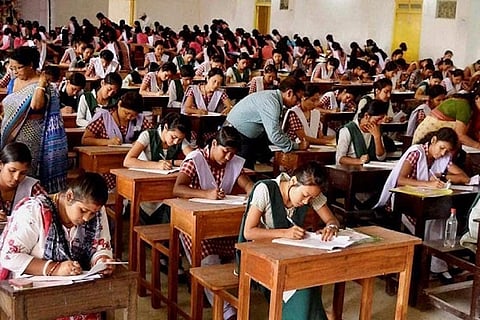

For the Class 10 or Senior School Leaving Certificate (SSLC) examination to be held this March, about 445 students will be appearing for the Tulu examination for their optional language subject. Since the 2010-11 academic year, this popular language of the Dakshina Kannada (DK) and Udupi districts is being taught by 35 schools in the region.
According to the Karnataka Tulu Sahitya Academy (KTSA), as of 2017, altogether 1,647 high school students have enrolled for Tulu as their third language instead of Hindi.
“We have received an overwhelming response from Puttur, where a few schools have about 90-100 students opting for Tulu. In fact, we had to request a few students to revert to Hindi as we could not arrange teaching staff to meet the huge demand,” B Chandrahasa Rai, registrar, KTSA said.
Result of sustained efforts
KTSA says its consistent efforts in the region to promote Tulu among educational institution has paid off – the number of schools teaching Tulu has gone up from just one institution in 2010-11 to 35 at present.
“In fact, it was the Catholic-run Pompei High School in Mangaluru which first responded to our plea and enrolled 25 students. This shows that the language has a universal appeal to everyone in the region, irrespective to religion, caste or creed,” he said.
As far as the syllabus for the language is concerned, the textbooks are inclusive of local Janapada, the background and achievement of prominent regional figures such as Rani Abbakka Chowta (Ullal), freedom fighter Karnad Sadashiva Rao, barrister Attavar Yellappa, Udupi Ramachandra Rao, actors Leelavathi, Jayamala and Kalpana. The textbooks are printed and supplied by the Karnataka Textbook Society (Department of State Education Research and Training).
Today the optional language offered to students from Class 6 to Matriculation has takers from many institutions in the coastal region. Of the 35 schools teaching Tulu, 19 are located in Puttur, Mangalore City (3), Belthangady (5), Bantwala (3), Sullia (3) and Udupi district (2), inclusive of both government and private institutions, KTSA says.
In 2017, the KTSA received a shot in the arm when in a year alone about 15 schools agreed to include Tulu language in their academic course.
The students appearing for the examination, however, will be using the Kannada script to write their answers and the KTSA says it will not press for Tulu script in the near future.
“As of now, there is no academician, parent or teacher who can authoritatively conclude on the Tulu lipi, there are so many versions. For us what is important is that knowledge is imparted for the preservation and carrying forward of the local cultural heritage. If we push for exclusive script for the language, we will discourage people’s interest in learning it and may have to roll back our initiative,” Chandrahasa explained.
In just four years, the number of students appearing for Tulu in the SSLC examination has jumped from 18 to 445, which is a staggering 2372% growth. Similarly, in comparison to 283 students writing the Tulu exam in 2016-17, this year 445 students will appear for the same (an increase of 63%).
Lack of Tulu teachers
In its instant agenda for the next year, while KTSA plans to rope in around 200 schools and register about 5,000 students in DK and Udupi, it is also facing a gap in finding a proportionate number of teachers. At the moment there are no qualified Tulu educationists. So the opportunity to teach is extended to whoever is familiar with the language and is interested in teaching.
“Through KTSA we are paying a sum of Rs 3,000 to the teachers. We have requested the state government to create vacancies and recruit teachers for the subject or at least take these teachers as guest faculty and give them the allotted compensation,” Chandrahasa said.
With approximately 20 lakh Tulu speaking people globally, KTSA is elated that under the new draft of the Karnataka Cultural Policy the state government has proposed to the Centre that Tulu be included in the 8th schedule of the Constitution.
According to Chandrahasa, preservation of local cultures and regional languages like Tulu will bring communities closer and contribute to the promotion of peace and stability in the region.
Content provided by www.storyinfinity.com (Subs and Scribes Media Ventures).